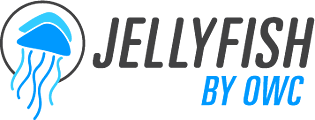How to Make Metadata Fields Work for Your Team
There are universal metadata fields across multiple NLE’s but those metadata fields don’t really apply to most workflows and content creation teams so you and your team will need to come up with a universal language of entering metadata into fields that don’t particularly spell things out.
Using traditional metadata fields of Shot, Take, and Scene to benefit your team.
Shot: you can embrace things such as Location name, Interior, Exterior, Day, Night
Take: Person, brand, mascot,
Scene: Event, seminar, schools within a university,
Keywords or Tags:
As a part of your metadata, your keywords and tags give you the power to label your assets in a way that’s relevant to your team's needs. Keywords and Tags are powerful, but can also cause great difficulty and inefficiency if used incorrectly.
Keywords and tags are a great way to simplify searches for the end-user, but it's very important to think of context.
Consider a video file that has a couple cruising down the Pacific Coast Highway in a Mustang convertible. For a car rental business, they’ll likely use more keywords to describe the car and location, while a lifestyle company will be more concerned about the people riding in the car and location.
When using keywords or tags be thorough, but don’t overwhelm the asset with too many keywords. Try to highlight the who, where, what, when, and why if it provides clarity.
At the same time, you don’t want to be too broad, If you use the same keyword or tag over and over again it's most likely too broad and the end-user will have to weed through a ton of material to find the specific clip they are looking for. For example, if you work at Toyota, the keyword or tag CAR would likely make it into the majority of your assets and should be eliminated. Focus on the model, CAMRY, the year 2020, as an alternate way of key wording or tagging.
If your team decides to use abbreviations make sure everyone is on the same page and consistent. Example: In the MTA Keywords you can see the use of the following abbreviation
Loc- location
Veh- Vehicle
A-Agency
P- Person.
Be literal with your keywords and tags, a clip might suggest a POOL PARTY, using literal words, such as POOL, FLOATIES, DJ, and BEVERAGES would make it much easier to find.
It can sometimes be difficult not to double up on synonyms to describe the same thing. It’s common practice to tag or keyword different synonyms, such as CANINE, DOG, and PUPPY, however, it’s better to pick one and use it consistently as this practice will save your team time in the long run.
Conclusion:
Your key wording and tag strategy is at the heart of your whole Media Asset Manager initiative. It’s important to take the time to sit down with your team and create keywords and tags that are consistent, easy to understand, and clear. Once you establish what is important to your team in logging the data, searching the data, and utilizing the common language spreadsheet “bible”, your team can begin to implement Kyno with your OWC Jellyfish.

